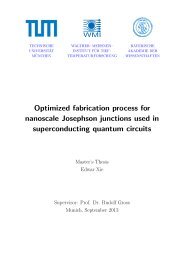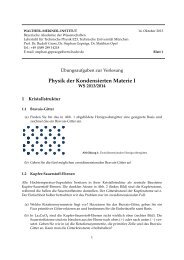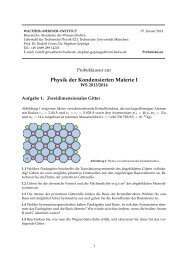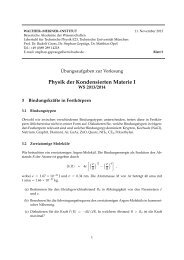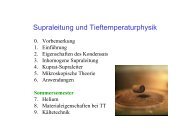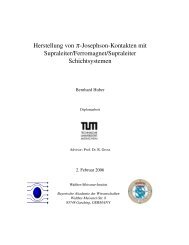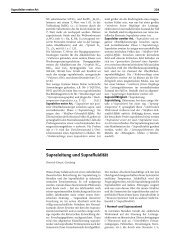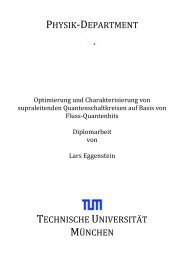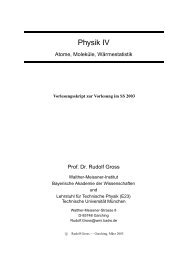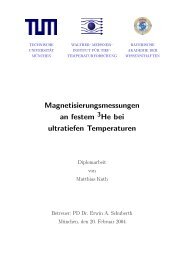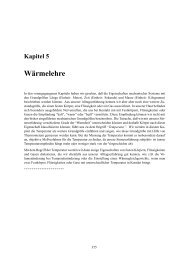Surface magneto-plasmons in magnetic multilayers - Walther ...
Surface magneto-plasmons in magnetic multilayers - Walther ...
Surface magneto-plasmons in magnetic multilayers - Walther ...
You also want an ePaper? Increase the reach of your titles
YUMPU automatically turns print PDFs into web optimized ePapers that Google loves.
Section 3.2<br />
Calibration 45<br />
U o u t [m V ]<br />
1 .6 2<br />
1 .6 1<br />
1 .6 0<br />
1 .5 9<br />
la s e r<br />
d a rk<br />
2 0 0 4 0 0 6 0 0 8 0 0 1 0 0 0<br />
tim e [s ]<br />
Figure 3.9: The black curve shows Uout as a function of time, when the laser diode illum<strong>in</strong>ates<br />
the reference photodiode. The red curve shows the dark signal of the<br />
photo-detector.<br />
Resolution limit of the voltmeter<br />
So far, measurements are discussed for which the output voltage of the photo-detector<br />
was recorded directly by a 195A voltmeter from Keithley. However, the surface plas-<br />
mons experiments typically require the measurement of small <strong>in</strong>tensity changes on a<br />
large constant background <strong>in</strong>tensity. To circumvent limitations due to the f<strong>in</strong>ite digi-<br />
talisation depth a differential (A-B) technique is used. To this end, a potentiometer<br />
is connected <strong>in</strong> parallel to the power supply of the laser diode. This allows to source<br />
a constant voltage of 0 ≤ UB ≤ 5 V to the <strong>in</strong>put B of a JFET preamplifier (SIM 910)<br />
from Stanford Research Systems. The output of the photo-detector is connected to<br />
<strong>in</strong>put A, and the output of the preamplifier is connected to a SIM 970 voltmeter from<br />
Stanford Research Systems, as shown <strong>in</strong> Fig. 3.10. This technique allows to subtract a<br />
constant level from the detected signal, so that only the smaller difference Uout − Uref<br />
is measured. Because this difference is much smaller than the signal itself it is possible<br />
to <strong>in</strong>crease the signal resolution and circumvent digitalisation issues.<br />
0 .0 9<br />
0 .0 8<br />
0 .0 7<br />
0 .0 6<br />
U o u t [m V ]



